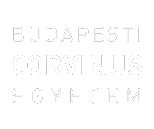Medek, Dóra Júlia (2021) Silent Persuasion : Marketing semiotics in branding and logo design used by food and beverage producer companies located in Hungary. BA/BSc szakdolgozat, BCE Kommunikáció és Szociológia Intézet, Kommunikáció- és Médiatudomány Tanszék. Szabadon elérhető változat / Unrestricted version: http://publikaciok.lib.uni-corvinus.hu/publikus/szd/Medek_Dora_Julia.pdf
|
PDF
- Requires a PDF viewer such as GSview, Xpdf or Adobe Acrobat Reader
1MB |
Szabadon elérhető változat: http://publikaciok.lib.uni-corvinus.hu/publikus/szd/Medek_Dora_Julia.pdf
Absztrakt (kivonat)
The present study investigates the relationship between the Hungarian consumers and four of the most traditional and popular national brands, namely Unicum, Dreher, Pöttyös, and Sport. Disassociation was applied for the Hungarian consumers which means respondents belonging to generation Z were divided from other, senior age groups; and in certain cases, women were segregated from men. To establish solid ground for the research, a thorough investigation needed to be carried out in the fields of semiotics, marketing, branding, the nature of consumption, colour communication and psychology, the psychology of logo shapes, and, of course, generation Z. Some of the greatest authors and researchers of the field are Richard C. Atkinson, Umberto Eco, Melindra Földvári, Kevin Lane Keller, Philip Kotler, Sidney J. Levy, Gabriella Németh, David Ogilvy, Laura Ruth Oswald, Professor Christian Pinson, Szabolcs Prónay, ure, and Charles Erzsébet Hetesi, Levente Székely, Ágnes Veszelszki, Ferdinand de SaussSanders Peirce. The theory of The Dyadic Model developed by Ferdinand de Saussure, The Triadic Model of the Sign Notion by Charles Sanders Peirce are detailed in the paper, as well Concept Theory built by -d Selfas the Four Ps model of marketing by E. Jerome McCarthy anM. Joseph Sirgy. As a new research was carried out, finding the most accurate and profitable research method was essential. Thus, the choice fell on the approach of online survey, one way of qualitative research methodology, which was shared via Google Forms. The survey encompassed closed- and open-ended questions besides rating questions, Likert scale questions, and demographic questions. The results were analysed with the help of Microsoft Excel. The key findings are the following. Generation Z attributes higher importance to the usage of symbols and the given brand’s familiarity and internationality, while older age groups attach slightly greater significance to the usage of colours. Astoundingly, when comparing the two genders, there were no significant difference between any given characteristic of branding. Focusing on the listed Hungarian brands, Pöttyös emerged as the most favoured, while Dreher turned out to be the least popular among both generation Z and older age groups. The question aiming the emotional relationship between the respondent and the given brand also supports the previous results. The thesis concludes that generation Z does prefer and favour visual representations more than other generations, which might be explained by the fact that the attention span of this generation prominently shortened. Another characteristic of generation Z is its globalised lifestyles and its unceasing presence on social media platforms. This trait comes across also in the fact that they preferred internationalisation of a brand in a greater extent than the older generations. Later, further areas could be investigated in this field, such as the reason for the feelings of the respondents which is provoked by the colour and visual elements of the products, which is directly related to psychology and biosemiotics. The above-mentioned topic might be the continuation of this paper to offer a wider and deeper insight into the marketing strategies of these traditional, well-known Hungarian brands. Moreover, further research could be boosted by examining even more logos and brands in Hungary or over the border.
| Tétel típus: | BA/BSc szakdolgozat |
|---|---|
| Témakör: | Marketing |
| Azonosító kód: | 14786 |
| Képzés/szak: | Communication and Media Science |
| Elhelyezés dátuma: | 12 Szept 2022 09:19 |
| Utolsó változtatás: | 12 Szept 2022 10:33 |
Csak a repozitórium munkatársainak: tétel módosító lap

